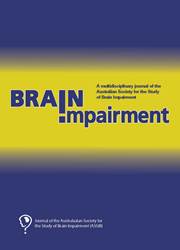Article contents
Some Thoughts about the Suitability of the Reliable Change Index(RCI) for Analysis of Ordinal Scale Data
Published online by Cambridge University Press: 23 February 2015
Abstract
The reliable change index (RCI) was introduced approximately 30 decades ago inorder to provide an empirical, statistically grounded technique for determiningwhether improvement after a therapeutic intervention was real or due tomeasurement error. Since the definitions of the properties and limitations ofscales of measurement described by Stevens in 1947, there has been vigorouscontroversy about whether it is permissible to analyse ordinal data withparametric statistics. Specifically, are parameters and statistics such as meansand standard deviations meaningful in the context of ordinal data? These areimportant concerns because many of the scales used to measure outcomes inbehavioural research and clinical settings yield ordinal-scale measures. Giventhat the standard deviation is used in the computation of the RCI, the questionas to whether or not the RCI is reliable when used with ordinal-scale data isexplored. Data from the SPRS-2 was used to calculate minimum reliable differencecriteria in terms of both (ordinal) Total Raw Scores (MRDRS) and logit scores (MRDLS) derived from Rasch analysis. Test–retest differences acrossthe Total Raw Score range were evaluated using each criterion. At both extremesof the range, small changes in Total Raw Score not deemed to be reliableaccording to the MRDRS criterion were classified as reliable according to the MRDLS criterion. Conversely, test–retest changes in the centre ofthe range deemed to be reliable according to the MRDRS criterion were classified as unreliable according to the MRDLS criterion. It is suggested that while MRDRS can determine numerically reliable differences, MRDLS can determine reliable differences that are meaningful in terms of theunderlying construct being measured.
Information
- Type
- Articles
- Information
- Copyright
- Copyright © Australasian Society for the Study of Brain Impairment 2015
References
- 2
- Cited by

